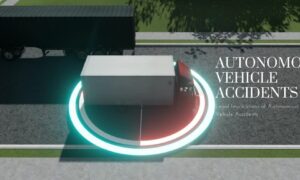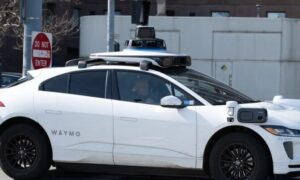Autonomous and self-driving vehicles have arrived, and they are the future of transportation. These vehicles operate without human intervention, relying on advanced sensor technologies and electronics to navigate roads, avoid obstacles, and transport passengers safely.
Designing these vehicles requires expertise in electronics and sensor technologies, and Electronic Design Services (EDS) are crucial in this process.
In this article, we will discuss the role of electronics in autonomous vehicles, examples of companies developing and testing these vehicles, and the critical role of Electronic Design Companies in their design.
Electronic Design Services for Autonomous Vehicles
Electronics Design Services (EDS) are critical for designing autonomous and self-driving vehicles. These services encompass a range of activities, including designing electronic systems, hardware, and software that enable these vehicles to operate autonomously. EDS providers work closely with vehicle manufacturers and software developers to ensure that the electronic systems and sensors are integrated into the vehicle’s design and function seamlessly.
The Role of Electronics in Autonomous Vehicles
Electronics play a vital role in the operation of autonomous and self-driving vehicles. The most critical component is the sensor systems, which are used to detect obstacles, pedestrians, and other vehicles. The sensors work in conjunction with other electronic systems, such as the GPS and the vehicle’s control system, to make real-time decisions about speed, direction, and braking. Electronic systems must also be designed to ensure the safety and security of passengers, as well as the vehicle itself.
Examples of Autonomous and Self-Driving Vehicles
Autonomous and self-driving vehicles have been a topic of discussion for many years, and in recent years, several companies have been actively developing and testing these vehicles. Here are a few examples of autonomous and self-driving vehicles that are currently being developed and tested:
Waymo:
Waymo is a subsidiary of Alphabet, Google’s parent company, and is one of the most prominent players in the autonomous vehicle industry. Waymo has been testing its self-driving vehicles on public roads in Arizona since 2017, and in 2020, it announced that it would be launching a ride-hailing service using its autonomous vehicles in Phoenix.
Tesla:
Tesla is one of the most well-known electric car manufacturers, and the company has been actively developing its autonomous driving technology, known as Autopilot. Tesla’s vehicles use a combination of sensors, cameras, and radar to enable semi-autonomous driving. The company has also announced plans to release a fully autonomous driving system in the near future.
General Motors:
General Motors has been developing its autonomous vehicle technology through its subsidiary, Cruise. In 2020, the company announced that it would be launching a self-driving taxi service in San Francisco using its Cruise vehicles. The Cruise vehicles are equipped with a range of sensors, including LIDAR and cameras, and are designed to be fully autonomous.
Uber:
Uber has been actively testing its autonomous vehicles since 2016, but the company has faced several setbacks in its development. In 2018, a pedestrian was killed by one of Uber’s self-driving vehicles during a test drive in Arizona. The incident caused Uber to suspend its autonomous vehicle testing for several months, but the company has since resumed testing.
Baidu:
Baidu is a Chinese technology company that has been developing its autonomous vehicle technology through its subsidiary, Apollo. Baidu’s autonomous vehicles use a combination of sensors, cameras, and radar, and the company has been testing its vehicles on public roads in China since 2018.
The Role of an Electronic Design Company in Autonomous Vehicle Design
Electronic Design Companies (EDCs) are instrumental in the development of autonomous and self-driving vehicles. These companies offer a range of services, including designing and testing electronic systems, hardware and software development, and providing expertise in sensor technologies.
One of the primary roles of an EDC is to work with the vehicle manufacturer to design and integrate electronic systems into the vehicle’s overall design. This includes designing the vehicle’s control systems, which must be capable of interpreting data from various sensors, making real-time decisions, and controlling the vehicle’s movement.
EDCs also play a significant role in developing the vehicle’s sensor systems, which are crucial for autonomous operation. These sensors use a range of technologies, including LIDAR, radar, and cameras, to detect obstacles, road markings, and other vehicles. EDCs must ensure that these sensors work seamlessly with the vehicle’s control system, enabling the vehicle to operate safely and efficiently.
In addition to designing and testing electronic systems, EDCs also provide ongoing support and maintenance for these systems. They work with vehicle manufacturers to ensure that the electronic systems are updated and maintained to meet evolving safety standards and regulations.
Arshon Technology is a leading Electronics Design Company that provides a range of electronic design services, including hardware and software development, testing, and support. With a team of highly skilled engineers and state-of-the-art technology, Arshon Technology is dedicated to helping companies bring their innovative ideas to life. If you’re interested in learning more about Arshon Technology and our services, please visit our website at https://arshon.com/.
Conclusion
The design of autonomous and self-driving vehicles is a complex process that requires expertise in electronics, sensor technologies, and software development. Electronic Design Services (EDS) play a critical role in the design and construction of these vehicles. To ensure the safety and functionality of autonomous vehicles, electronic systems must be designed to be fail-safe and secure. With the right expertise and technology, we can create a future of safer, more efficient transportation.


































